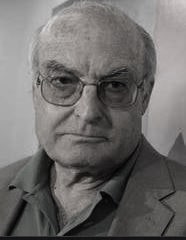L. Gordillo
Luis Gordillo (Seville, 1934) is a Spanish painter and one of the main figures of abstract art in Spain.1 Of great international prestige, his works can be seen in the main contemporary art museums in North America and Europe Luis Rodríguez Gordillo was born in the city of Seville in 1934, the son of a well-off middle-class doctor. He studied Law, without feeling a great legal vocation, according to the painter himself, after finishing his studies in Law, he began studying Fine Arts in the same city.2 At the end of the 1950s he went to Paris, where he contacted with avant-garde art.
He is one of the most unique creators on the Spanish art scene of the second half of the 20th century. His work revolves around different lines of research. He participated in informalism, following in the footsteps of Tàpies, Wols, Dubuffet and Jean Fautrier.3 He has also been considered one of the Spanish artists who best interpreted pop art in the 1960s.4 A part of his work has explored the importance of series and repetition as a compositional tool. Gordillo considers that an image that is subjected to a continuous process of reproduction, and never reaches a definitive state. On the other hand, after the discovery and practice of psychoanalysis, Gordillo introduced into his work an interest in meanings and the link between the world of thought, that of experience and that of aesthetic expression. But one of Gordillo’s most unique contributions to contemporary art has been the definition of appropriate color strategies for current urban phenomenologies. In this sense, his work is related to the tradition of documentary photography and popular cultures linked to graphic design. His work had a special attraction for painters such as Guillermo Pérez Villalta, Carlos Franco and Carlos Alcolea.

